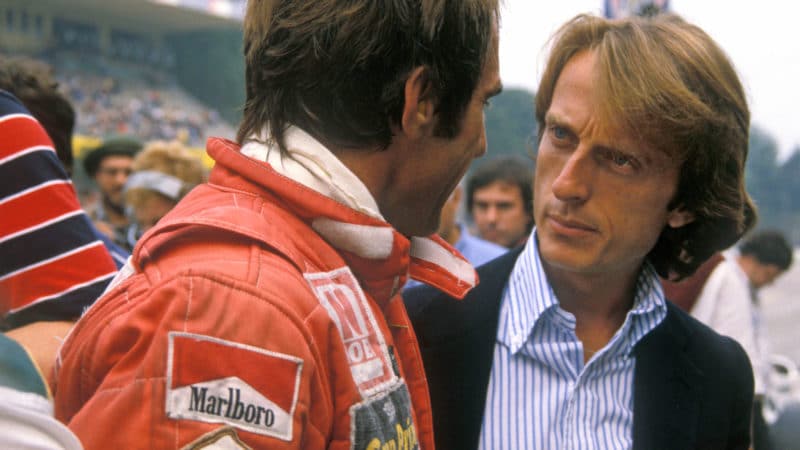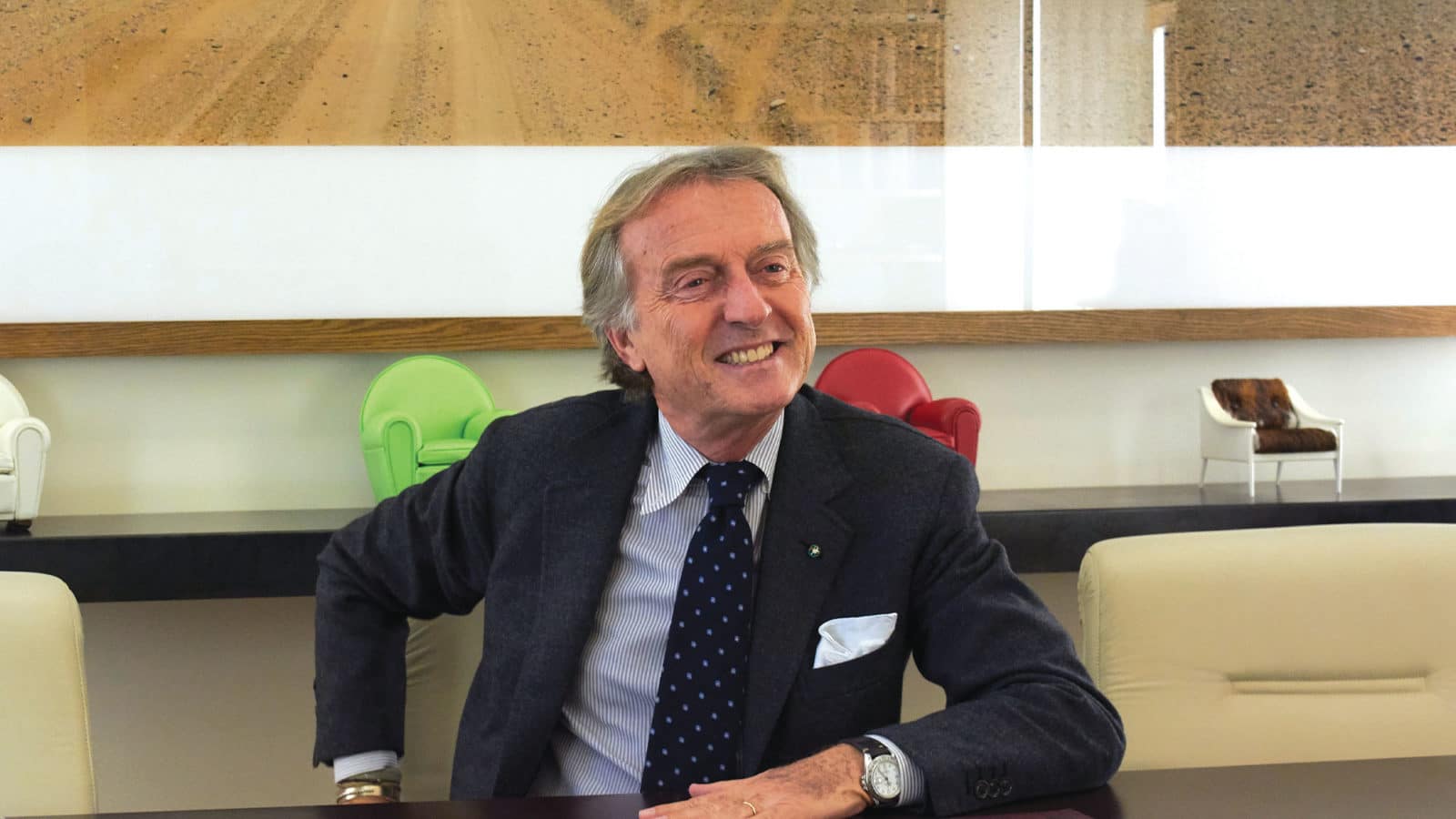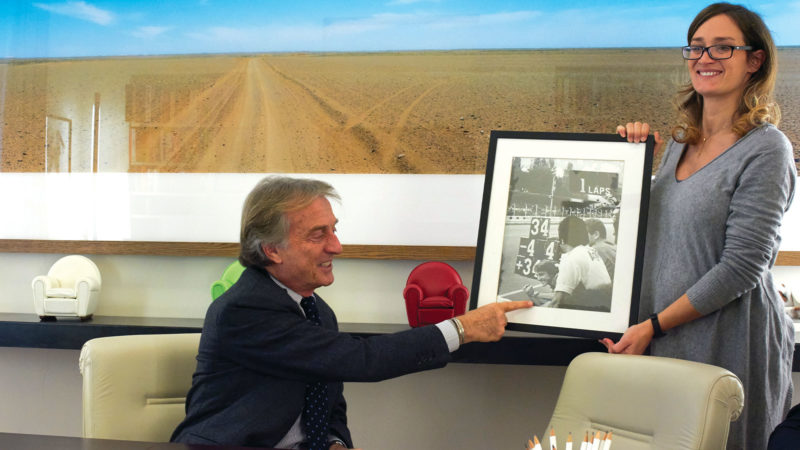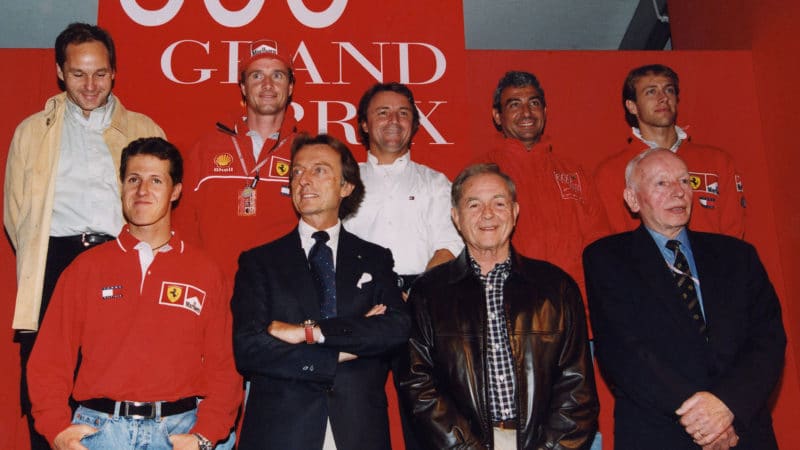The prospect of talking with Mr Ferrari, while formidable, was maybe a little less so for him than it would have been for most: from an aristocratic background, he was a close family friend of the Fiat-owning Agnellis, having been a school buddy of Gianni Agnelli’s nephew. “Mr Agnelli came to be like a mixture of a father and a brother to me,” he says. “He was not a team guy, not a manager of people so much. But a visionary. He spent a lot of attention on what will happen in the world, the future of the world, the new countries. And he had this sense of state, where he felt he should set an example to the people in the company. He was very well educated but most of all he had a generous spirit.” Montezemolo’s career would come to be inextricably linked with Agnelli. “He and Mr Ferrari liked each other and had a lot of things in common, but were quite different. Ferrari’s way was to shake everything up among his employees, saying, ‘Luca says you’re an idiot because…’ and sometimes he went too far. But like Mr Agnelli he loved the Italian way of life, food, wine, social contacts, and they both always looked ahead. But like Ralph Lauren Mr Ferrari was a genius of marketing: the name, the brand, the myth, the dark glasses that he threw to one side as soon as the interview was over. Fantastic. What I learned from him was to be even more tough when you win because if not, sooner or later you lose. Second, if you are in the shit never surrender, always react.”
So in June of ’73 after completing his studies, young Luca drove to Maranello, as promised. “We had a nice meeting and he said, ‘Listen, I need a boy like you because I’m in the hands of the technicians.’ I started to work as his assistant in July.” So much for the career as an international lawyer. But for a man of such calibre and connections, the starting point probably wasn’t critical. “So I arrive at Silverstone and, after practice, Jacky Ickx was 19th. I phone the Old Man. ‘How are we doing?’ I say, ‘In my opinion, very bad.’ And he tells me that I must tell team boss Colombo to load the cars onto the truck and come home, saying we couldn’t be seen by the British racing fans to be so uncompetitive. This was my fourth day in the job! I managed to reason that it wasn’t really practical to do this – and he accepted it.”
Who knows, perhaps that had been Enzo’s test for the 25-year-old? To see if he wasn’t just another yes man – because he’d had his fill of those, marooned in his kingdom, cut-off from the racing immediacy. If this super-bright, well-connected young kid could also be tough, then the Old Man would have a live-wire connection to what was happening in the field. He was already formulating a recovery plan for ’74, involving the rehabilitation of the genius Mauro Forghieri – and now Montezemolo was part of those plans too. For ’74 Enzo made him team manager. Forghieri designed the cars, Lauda (and Clay Regazzoni) drove them, Montezemolo managed it all. It was a formidable combination and came to form F1’s gold standard, finally rubber-stamped at Monza ’75 when Lauda clinched the Scuderia’s first title in 11 years and Regazzoni won the race. In his office Luca shows us a picture of the Ferrari pit wall from that day with three laps to go. Below the board saying that Regazzoni is leading Fittipaldi and that Lauda is in the required third place to seal the title, there is a huge smile on a handsome young face framed by an immaculate mop of hair.

With Carlos Reutemann in the pits in 1981
Grand Prix Photo
With that job done, he was out of there – fast-tracked onto bigger and better things within the Fiat empire. The team definitely lost some impetus afterwards, Lauda noting that an air of complacency began to surface in the preparations for ’76. “I spoke with him this morning actually,” says Luca of his close and enduring friendship with Lauda.
“I first met him in Milano in ’73 as we tried to find a deal for ’74. He told me how much he wanted – a number in Austrian schillings. We didn’t know how much this was in lire so we bought a Financial Times to look at the exchange rates. The first time he came to Maranello he came in a Ford Capri! I said, ‘Listen, be careful.’ Many years later Jean Todt made the same mistake when he first came to meet me – he arrived in a Mercedes. My son said, ‘He must be an idiot.’
“When I joined, Ferrari had not won a title since 1964 and I thought there has to be a reason for that”
“When I joined, Ferrari had not won a title since 1964 and I thought there has to be a reason for that so I very carefully tried to benchmark everything – working methods, engineers, relationships, everything. And the benchmark driver was Jackie Stewart and I believed that Niki potentially compared well. We succeeded together and formed a very close human relationship, talking every day.”
From corporate Fiat to positions elsewhere within the Agnelli empire, Montezemolo was just a brief but brilliant comet as far as F1 was concerned. Ferrari was in a sorry state by the time Agnelli recalled him to Maranello in October 1991. Enzo was three years dead and both the company and the racing team had floundered badly under Fiat corporate management. Alain Prost had just been sacked after a disastrous F1 campaign that yielded not a single victory. The road car range – the new 348 and the venerable Testarossa – had lost much of the magic of previous years, the factory full of unsold cars, workers being paid half-wages to stay at home. “Mr Agnelli and Cesare Romiti said, ‘We are very concerned about Ferrari. You have to go back,’ and the way they were talking I was thinking after all these years they want me to go back to what I was doing before as team manager? So I said, ‘OK, if you insist. But I can only do this for a couple of years, re-organise and then go on my way.’ And Mr Agnelli said, ‘Luca! Are you not pleased? You don’t want to be the chairman and CEO of Ferrari?’ and only then did I realise: ‘Ah. So it’s a different position! OK.’




